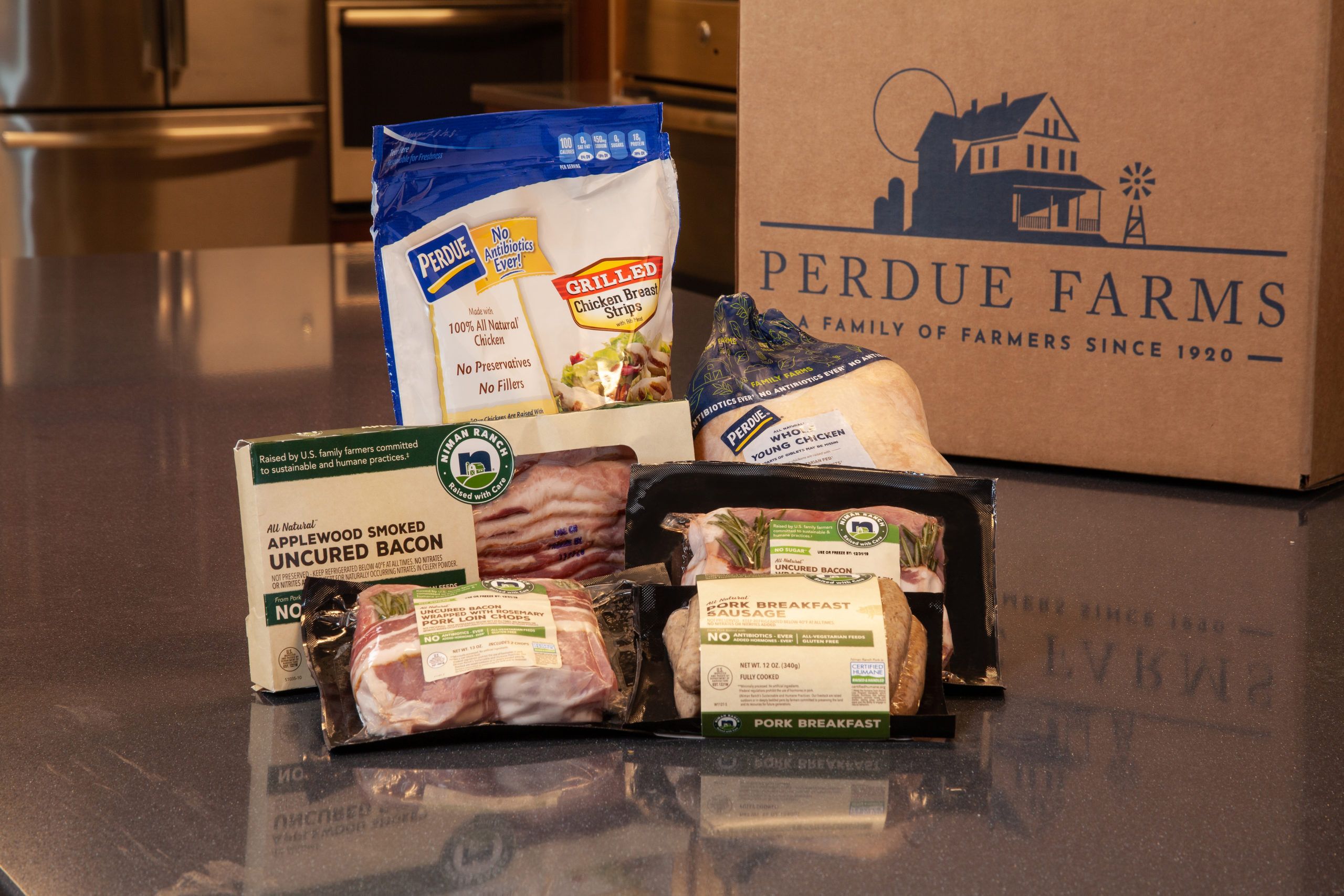It’s a sign of the digital times when a major food player launches its own e-commerce channel to compete with the rising tide of online food startups.
Earlier this week, Perdue Farms announced the launch of a dedicated e-commerce portal that allows consumers to order poultry products directly from the brand. Perdue decided to launch a standalone e-commerce site in response to the growing online grocery trend and to keep pace with consumers’ ever-growing appreciation of being able to have things delivered to their homes.
The initial offering of roughly 100 items includes frozen beef, pork, chicken, and lamb under the Perdue Farms label. It also offers a variety of other brands within its portfolio including Niman Ranch. It hopes to add additional products down the line and will stick to frozen items.
Perdue has tapped a third-party logistics provider to handle the warehousing and order fulfillment aspect of the new e-commerce site. It hopes to eventually integrate its e-commerce site with other online grocery retailers’ sites to allow for basket sharing. If a customer wants to find a Perdue product on Perdue’s site, the basket sharing would allow the product to be added to the grocery retailer’s cart assuming the grocery retailer has the item in stock.
To cut down on the carbon footprint associated with shipping food direct-to-consumer, Perdue has opted for sustainable packaging materials including Green Cell Foam insulation made from water-soluble cornstarch that can be dissolved in the kitchen sink. Each order also includes a reusable tote bag, a packet of pollinator seeds, and a donation to the Arbor Day Foundation.
Although e-commerce is changing the tide for industries like retail and household goods, adoption has been slower in grocery retail. Many consumers initially balked at the idea of a stranger picking their perishable items or had concerns about whether it was safe to leave things like yogurt or ice cream on their front doorstep for several hours.
While online grocery sales grew 15% in 2019, gaining 35 million shoppers, this still only accounts for 6.3% of US households. Although household penetration is up 5% compared to 2018, purchase frequency has failed to climb with only 11.8% of consumers reporting that they buy a large amount of their groceries online.
New entrants are also seeing serious competition from powerhouses like Amazon and Walmart who are throwing considerable resources to converting consumers to loyal online shoppers. As a testament to the struggles that e-commerce can pose, Walmart projected losses of $1 billion for its e-commerce platform alone last year, and this includes products beyond grocery like household goods.
For smaller grocery retail players and new entrants, making the financial burden and logistics of delivering perishable food products direct to consumers’ homes has also proven difficult, as well. Even for curbside pickup offerings, grocers are struggling with figuring out how to reallocate labor to pick and pack orders, reduce customer wait times, and dealing with customer backlash when unwanted substitutions appear in their grocery bags.
Considering that Perdue already sells many of its products through major retailers, it’s hard to know whether a standalone e-commerce offering will generate enough traffic or whether consumers will bother to order products directly from Perdue when they could obtain those same items along with the rest of their grocery shopping needs from another retailer like Walmart.
Although online grocery has faced a number of growing pains and has a ways to go before it replaces brick and mortar channels, it’s putting serious pressure on entrenched players. Grocery retailers are having to get creative when it comes to giving consumers a reason to come to the physical store location in lieu of ordering what they need online. From cooking demonstrations to rooftop farms to food halls, grocers are not holding back on the bells and whistles. As the trend continues to gain momentum, retailers will need to consider whether launching an e-commerce platform makes dollars and cents or whether they’d simply be doing it to keep up appearances.




